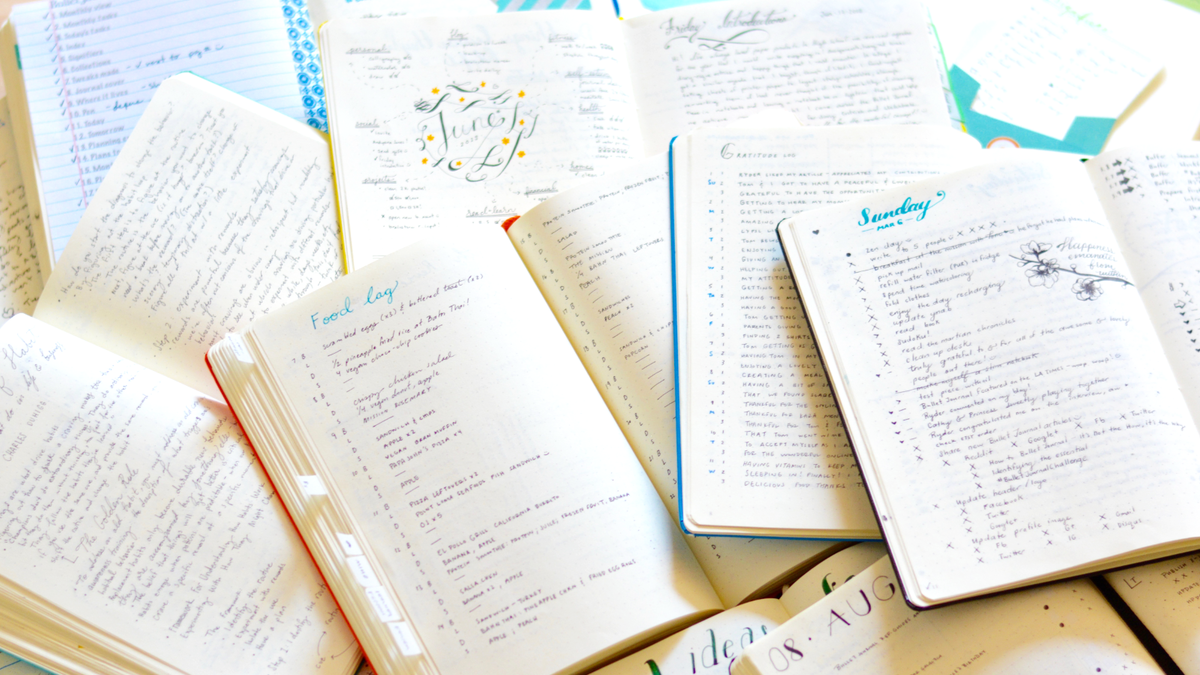(Source)
When I think of learning, I think of school. I think of sitting in a stuffy classroom, bored, but trying to listen. Sitting at home, trying to revise. Sitting in a drafty hall, trying to pass exams.
I found the whole process of learning incredibly difficult.
So much so, that when I finished school, I actively avoided learning new things. I didn’t want to learn a new language. Couldn’t care less about learning a new sport. I bypassed ‘How to’ articles, and I refused to consider learning a new skill.
I’m embarrassed to say that I just wasn’t interested in developing myself.
Eight months ago that all changed.
Read this to find out what changed, why it changed, and how I’ve learned to love learning.
How do people learn? The theory behind learning

(Source)
I wasn’t always against learning. I remember, as a child, needing to know the ‘how’ and ‘why’ behind every ‘when’, ‘where’ and ‘what’.
I think my aversion to learning came, as I said earlier, from school.
According to research, I don’t think I’m alone in feeling felt that way about school. About 1 in 3 teenagers feel bored and 42% feel stressed and anxious when they’re sat in a classroom, learning.
I remember spending hours and hours sitting in laborious lessons (or classes, for anyone outside the UK), trying to understand and absorb key learnings.
I remember reading through piles and piles of homework trying to understand and absorb key learnings.
I remember preparing for test after test after test, trying to understand and absorb key learnings.
And I remember sitting exam after exam after exam trying to prove that I had understood and absorbed those key learnings.
School was one big, long, enforced lesson in learning how to learn.
But, being forced to learn how to learn was perhaps the nail in the coffin of my natural curiosity.
As humans, we tend to learn by observation, which is why teachers encourage their pupils to use techniques such as visualization or experiential learning.
These learning models are instructional strategies that demonstrate an approach to learning that people can adopt, to help them develop.
Remember this one: Write it out. Read it out. Practice it. Then repeat it.

(Source)
In lessons, we’d get told something. We’d write it down. We’d complete a piece of homework on it. Then, we’d get tested on it.
When preparing for exams, I’d write something out, read it, test myself on it, and then repeat the process again…and again…and again, until I’d learned it, off by heart.
I’d get frustrated when I didn’t get it right, my hand would cramp up with all the writing and re-writing, and I’d fight a rising sense of panic, as it got closer and closer to the exam. It was awful. I hated it.
I can’t deny it though, this learning technique worked; I passed my exams, I got into university, and I got a good degree.
But, the thought of doing it all again, to learn something new, brought back horrific memories, filled with tears, panic, anxiety, and dread. I couldn’t face it.
Until recently.
What changed?
The mind-blowing discovery I made about learning
I got a new job.
So that was where I was, eight months ago. Trapped in a sequence of wanting to learn new skills, but not being able to face the write, read, practice, and repeat cycle.
That all changed when I got a new job.
When I joined Process Street, I expected the usual learning curve. I anticipated it would take a while to find my feet. That I would struggle to understand how to do the simplest of tasks. You know, the usual onboarding battles.
But, to my surprise, I found I was able to hit the ground, more or less, running.
In my previous job, it took around three months for me to learn how to write a piece of content, and for the editor to have the confidence to publish it.

(Source)
It took countless attempts, rewrites, drafts, feedback, and constructive criticism to get my work published. I found this learning curve frustrating, and I was once again reminded how difficult learning something new was.
But, with Process Street, I learned how to write a Process Street post in just two weeks. My first piece of content, around how to write a proposal, was published after just three weeks. And, the biggest surprise of all, was that I thoroughly enjoyed the entire learning experience!
Who do I have to thank for this?
Not my mentor (sorry Ben, although you did obviously help!), not my editor (sorry Adam, although you did obviously help!), not my colleagues (sorry Jane, Thom, and Oliver, although you did all obviously help!).
No. I have processes to thank for this.
When I joined, as part of the onboarding process, I was given a 75 step process to follow, to help me learn how to write blog posts.
I won’t lie. Facing a 75 step process was daunting at first. Especially with my learning phobia.
But, this process took me by the hand and walked me through, step-by-step, how to research, write, and edit a blog post so that it met the brief, matched the tone of voice, and was aligned with the Process Street style.
The next post I was given, around standard operating procedure templates, I followed the same process. I found I’d already subconsciously learned several steps, and I completed the process a lot quicker.
Fast-forward eight months and, having run this process over 90 times, I know it incredibly well. I bet I could even write a blog post, from start to finish, without it (I won’t of course, because that’s when mistakes creep in!). I’ve learned the 75 step process so well, that I think I could damn near get it right, without it.
To summarize: I learned how to write, by following a process. And I enjoyed it.
NB: If you want to create a similar process for writing content, check this post out. It’s easier than you think!
When you think about it, following a process to learn how to do something is similar to the old learning techniques we followed at school.
It follows a similar framework; the tasks are written out. I read them. I practice them and I repeat them.
But it doesn’t feel like a long laborious process each time I do it.
I don’t feel like I’m trying to learn the process, but nothing is sticking. I’m actively learning as I’m working through tasks. I’m remembering how to do things effortlessly. I enjoy working through steps and ticking them off as I complete them.
I like the familiarity of the process, but equally, if someone makes a change to the process (which they do all the time, to continuously improve it), I thrive off learning something new. I don’t get bogged down with having to learn a new way of doing things. I take it in my stride and just follow the steps.
Without this process, I’m in no doubt that I’d still be caught in a web of confusion, trying to learn how to write a post for Process Street (if you want to know what else processes helped me with, check out this post I wrote for Thrive Global last month).
But using processes to help me learn, doesn’t only apply to work. My re-discovered passion for processes and learning has spilled out into my personal life.
Specifically home renovations.

(Source)
I now actively seek out ‘How to’ articles and step by step videos. In fact, by following processes, I’ve recently learned how to:
- Restore wooden beams
- Strip paint off a door
- Rewire a plug
- Plaster a wall (albeit badly in my case)
- Lay floorboards
In fact, if you’re planning to any DIY or home renovations yourself, I would definitely recommend you watch this guy:
So there you have it. That’s how I learned to love learning and became a DIY expert overnight.
Now, over to you! Find a process and get learning!


